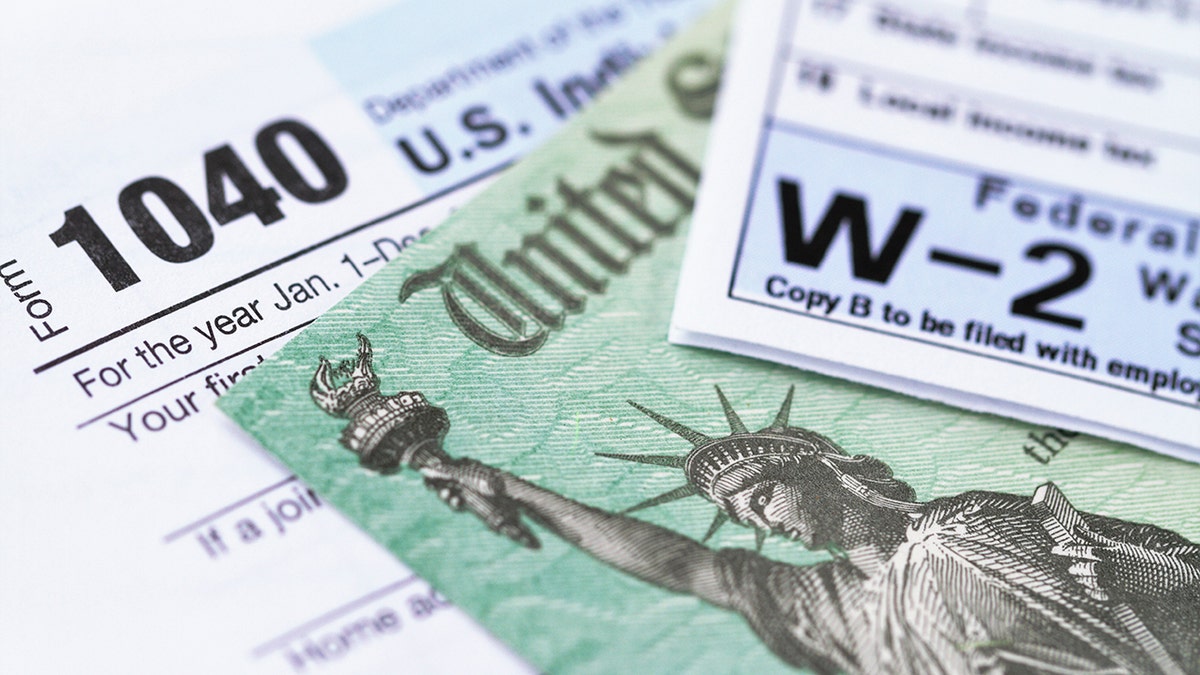More states pushing for wealth taxes
FOX Business’ Lydia Hu reports on wealth tax proposals across eight states on ‘Cavuto Live.’
New York imposes the most burdensome taxes on its residents of all the country's 50 states, according to a new study.
WalletHub compared the 50 states in terms of their property taxes, individual income taxes, and sales and excise taxes in order to calculate their "overall tax burden," or the proportion of total personal income that residents pay toward state and local taxes.
According to WalletHub's findings, here are the 10 states with the highest overall tax burdens:

New York Gov. Kathy Hochul presents her budget at the state Capitol in Albany, N.Y., on Feb. 1, 2023. (AP Photo/Hans Pennink)
RED STATES PUT TAX MONEY TO BETTER USE THAN BLUE STATES: STUDY
- New York at 12.47% (property tax burden of 4.36%, income tax burden of 4.72%, sales and excise tax burden of 3.39%)
- Hawaii at 12.31% (property tax burden of 2.74%, income tax burden of 2.86%, sales and excise tax burden of 6.71%)
- Maine at 11.14% (property tax burden of 5.33%, income tax burden of 2.52%, sales and excise tax burden of 3.29%)
- Vermont at 10.28% (property tax burden of 4.98%, income tax burden of 2.07%, sales and excise tax burden of 3.23%)
- Connecticut at 9.83% (property tax burden of 4.24%, income tax burden of 2.92%, sales and excise tax burden of 2.67%)
- New Jersey at 9.76% (property tax burden of 4.88%, income tax burden of 2.36%, sales and excise tax burden of 2.52%)
- Maryland at 9.44% (property tax burden of 2.66%, income tax burden of 4.21%, sales and excise tax burden of 2.57%)
- Minnesota at 9.41% (property tax burden of 2.89%, income tax burden of 3.11%, sales and excise tax burden of 3.41%)
- Illinois at 9.38% (property tax burden of 3.66%, income tax burden of 2.27%, sales and excise tax burden of 3.45%)
- Iowa at 9.15% (property tax burden of 3.4%, income tax burden of 2.41%, sales and excise tax burden of 3.34%)

Florida Gov. Ron DeSantis speaks to voters in Des Moines, Iowa, on March 10, 2023. (Scott Olson/Getty Images)
HIGH-TAX STATE EXODUS ACCELERATES AS MORE AMERICANS FLEE TO FLORIDA, TEXAS
And here are the 10 states with the lowest overall tax burdens:
- Oklahoma at 7.12% (property tax burden of 1.76%, income tax burden of 1.69%, sales and excise tax burden of 3.67%)
- Missouri at 7.11% (property tax burden of 2.16%, income tax burden of 1.99%, sales and excise tax burden of 2.96%)
- Montana at 6.93% (property tax burden of 3.40%, income tax burden of 2.32%, sales and excise tax burden of 1.21%)
- South Dakota at 6.69% (property tax burden of 2.69%, income tax burden of 0.00%, sales and excise tax burden of 4%)
- Wyoming at 6.42% (property tax burden of 3.47%, income tax burden of 0.00%, sales and excise tax burden of 2.95%)
- Florida at 6.33% (property tax burden of 2.75%, income tax burden of 0.00%, sales and excise tax burden of 3.58%)
- Tennessee at 6.22% (property tax burden of 1.66%, income tax burden of 0.02%, sales and excise tax burden of 4.54%)
- New Hampshire at 6.14% (property tax burden of 4.94%, income tax burden of 0.13%, sales and excise tax burden of 1.07%)
- Delaware at 6.12% (property tax burden of 1.88%, income tax burden of 3.15%, sales and excise tax burden of 1.09%)
- Alaska at 5.06% (property tax burden of 3.59%, income tax burden of 0.00%, sales and excise tax burden of 1.47%)

A 1040 income tax form and W-2 wage statement with a Federal Treasury refund check. (iStock)
TEXAS AND FLORIDA REMAIN TOP DESTINATIONS FOR MOVERS IN 2022, U-HAUL SAYS
Overall, Democrat-led blue states finished with an average rank of 19.68 on the list of 50 states compared to 31.32 for Republican-led red states, indicating the former had significantly higher tax burdens. States were designated red or blue based on how they voted in the 2020 presidential election.
WalletHub's report came out three weeks before Tax Day on April 18, when Americans' income tax returns are due to be submitted to the federal government.
Beyond the additional financial burden on individuals and families that state taxes present, they also raise the question of how those state taxes affect economic growth for residents.
"Many people disagree on the relationship between state tax burdens and economic growth," Jordan Barry, professor of law and taxation at the University of Southern California, told WalletHub. "There are good arguments why, all else equal, a higher tax burden reduces economic growth. On the other hand, there are also strong arguments that certain kinds of public investments — such as in education, transportation and infrastructure — can increase economic growth, and taxes enable states to make those investments. At the end of the day, the answer probably depends not just on how much a state taxes, but also on how those taxes are structured and what the state spends its money on."

New York Gov. Kathy Hochul debates in the race for governor at the studios of WNBC4-TV in New York City on June 16, 2022. (Craig Ruttle-Pool/Getty Images)
However, some experts argue it's clear that higher taxes inhibit economic growth.
"The less state tax burden will drive the state economy," Joseph Krupka, the accounting program coordinator at Florida State University, Panama City, told WalletHub. "Corporations seek state tax incentives when developing long-term strategies for where to locate new facilities such as plants and offices. Reduced corporation and real estate tax burdens along with a favorable personal income tax for their employees are the two keys."
That may help explain why a striking number of people are leaving high-tax states.
The 10 highest tax states lost nearly 1 in 100 residents in net domestic migration between July 2021 and July 2022, while the 10 lowest tax states gained almost 1 in 100, according to a recent analysis by James Doti, president emeritus and economics professor at Chapman University.
CLICK HERE TO GET THE FOX NEWS APP
Some experts warn such an exodus can negatively impact the economic growth of the states that people are leaving.
"As we have been witnessing, there is a demonstrative burden between state tax burdens and economic growth," James Mohs, a professor of accounting and taxation at the University of New Haven, told WalletHub. "Higher tax rates lead to relocations. Both individuals and businesses tend to leave high-tax jurisdictions. The rate of relocations seems to directly correlate with tax rates and the impact of costly infrastructures. The infrastructure costs may often be indirect taxes and fees. When capital leaves states and services are not clawed back, increases in taxes and fees will have a downward impact on economic growth."





